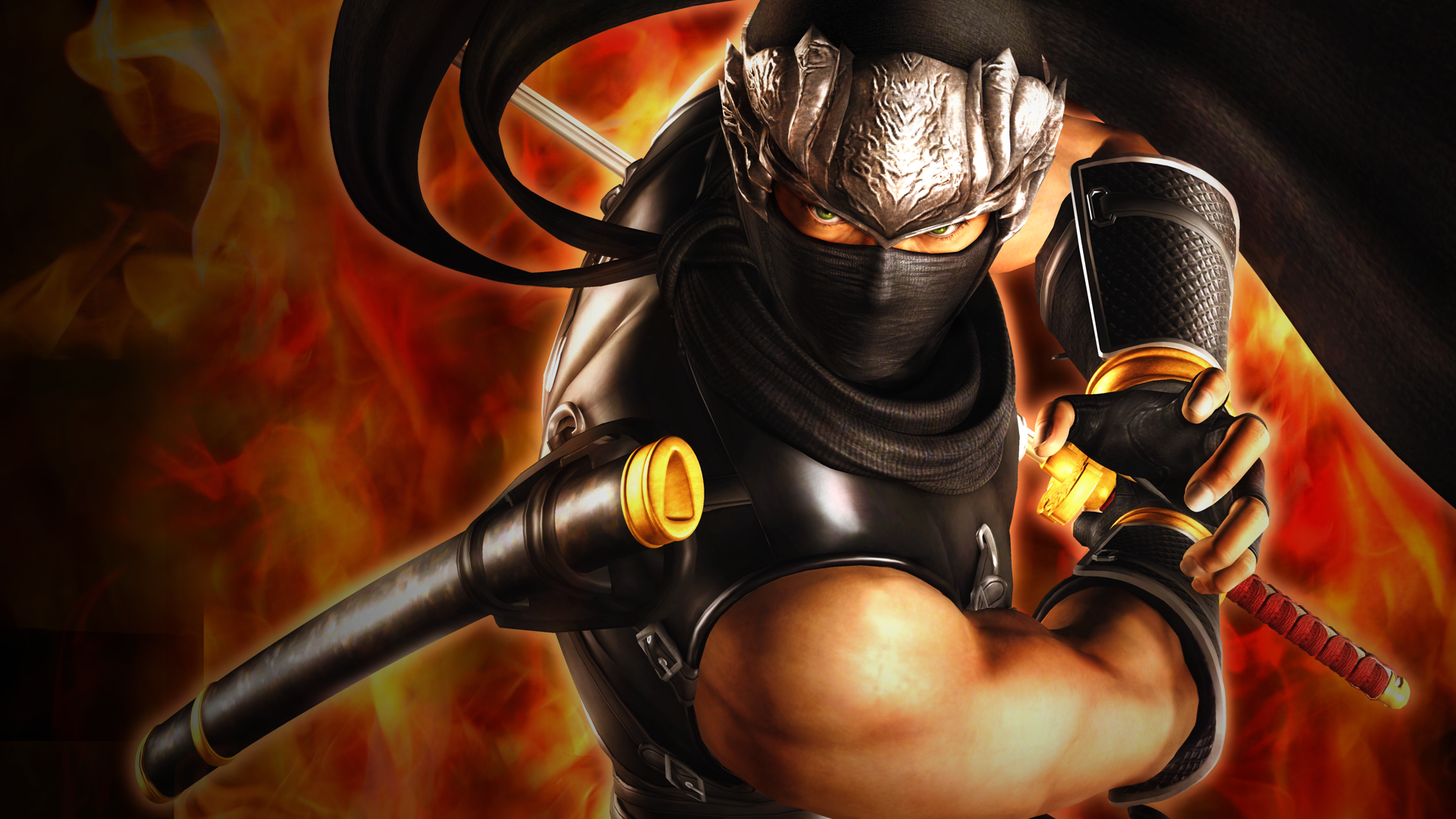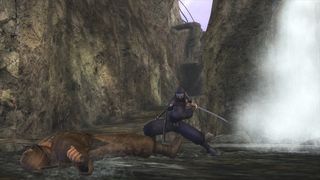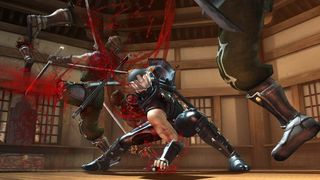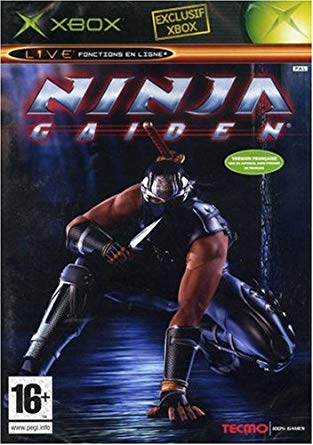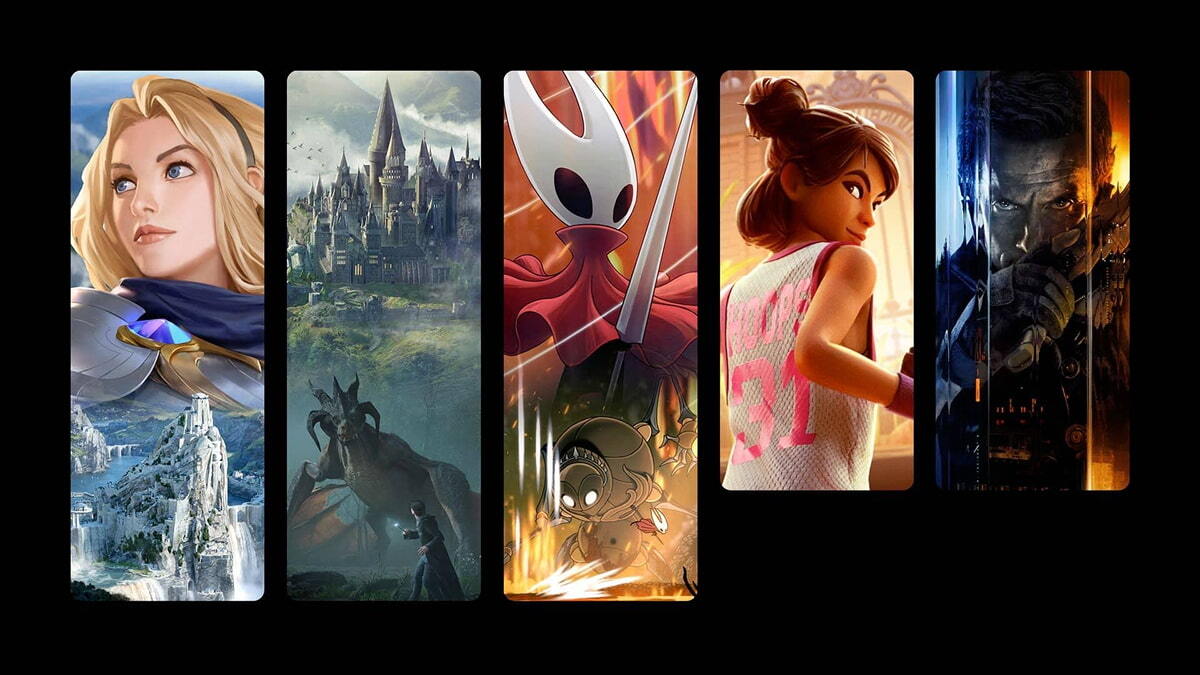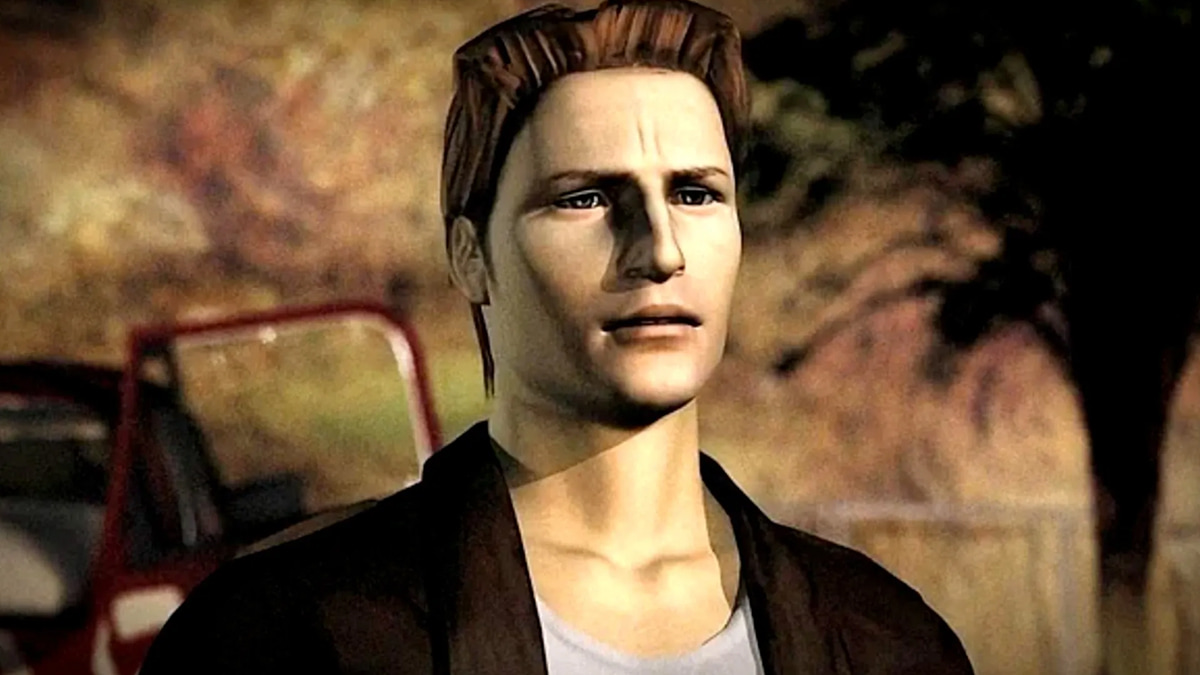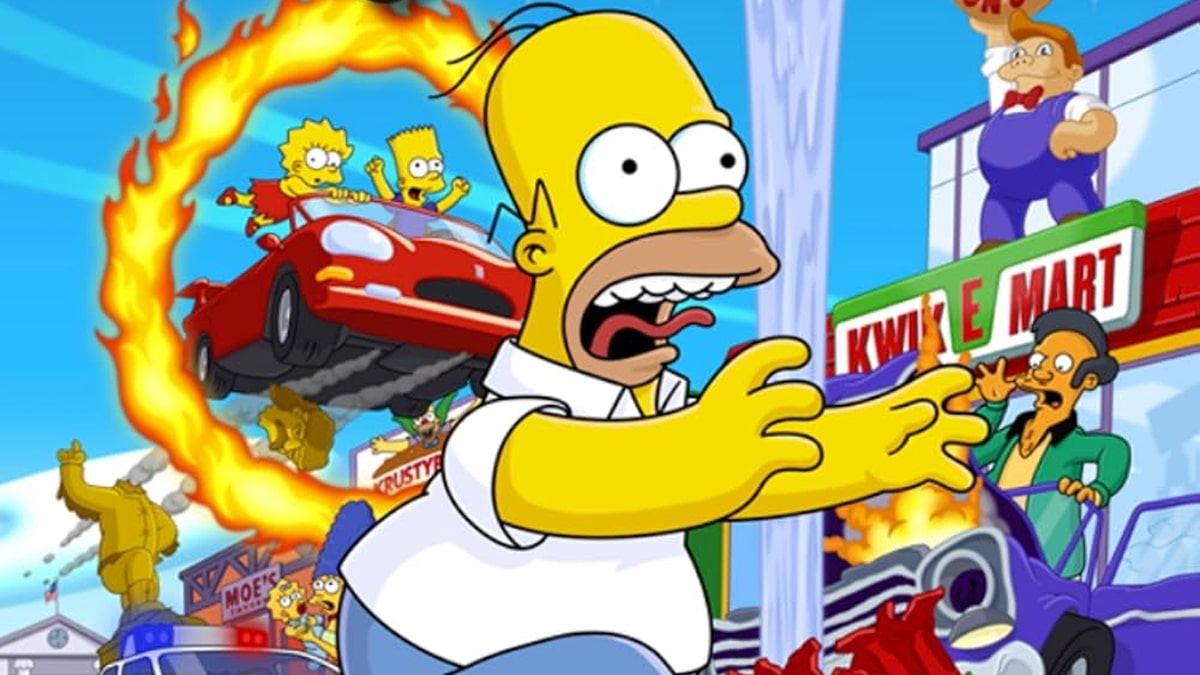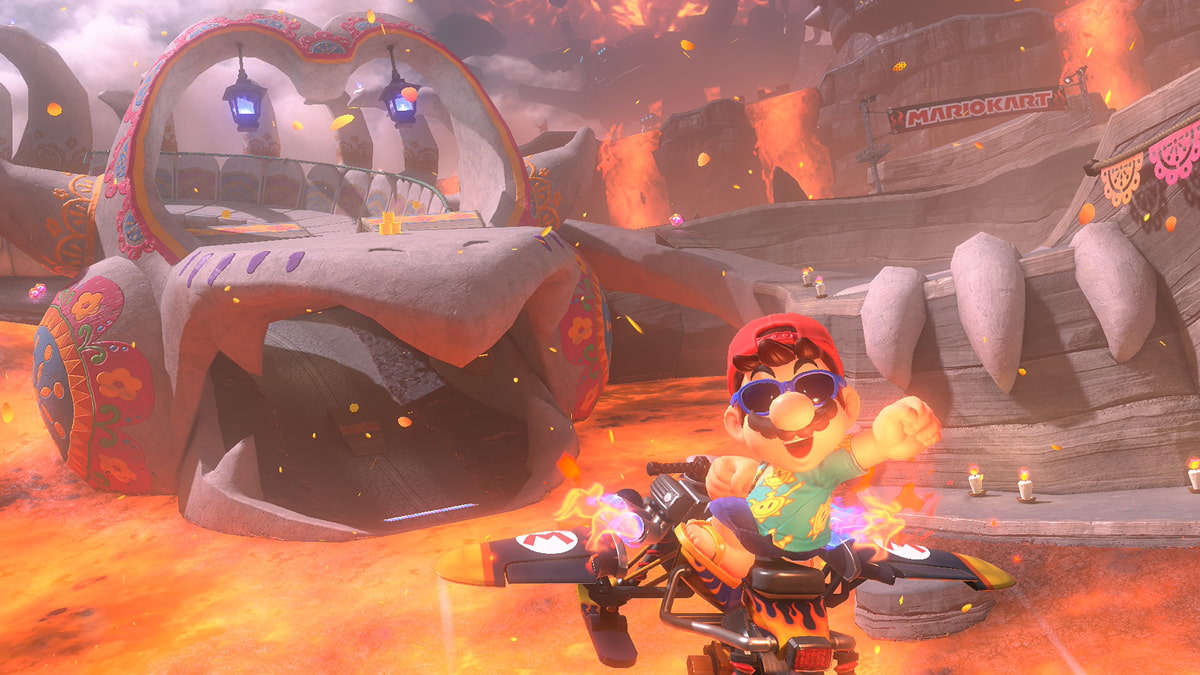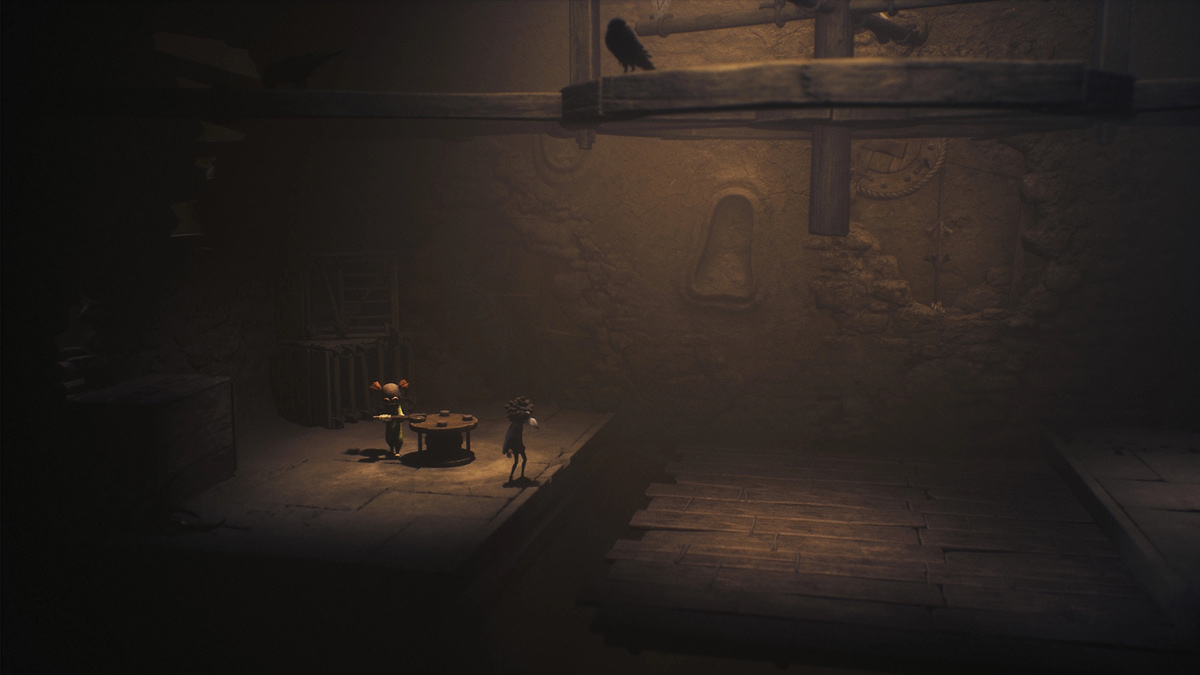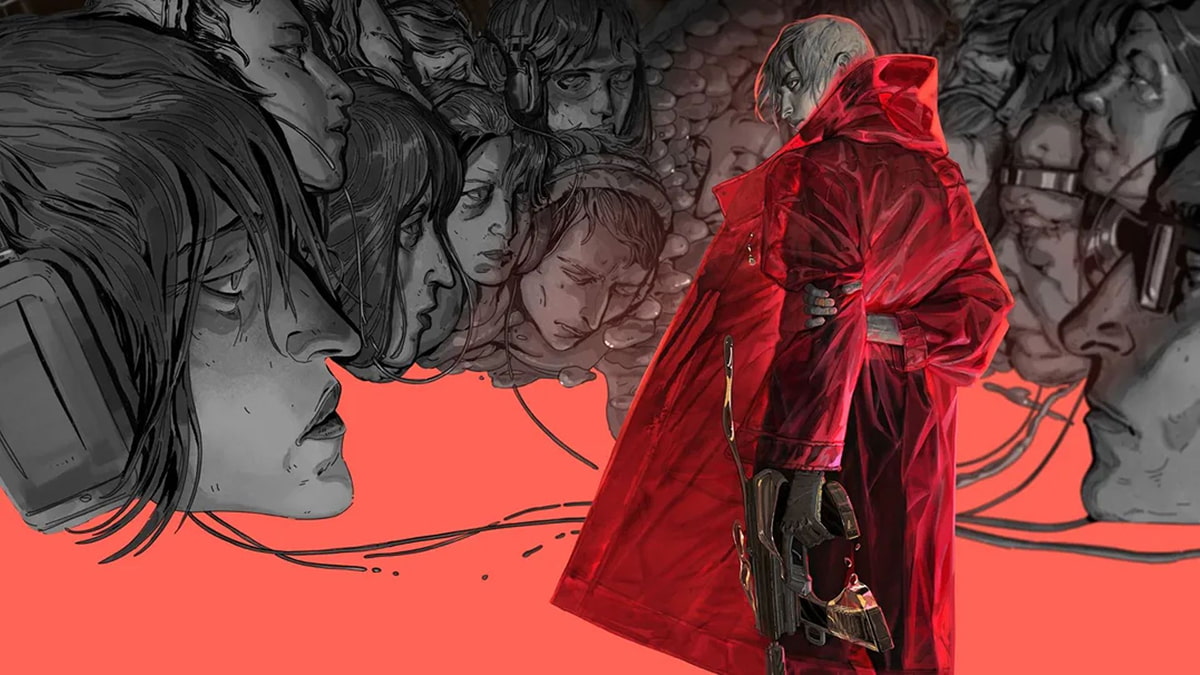You can trust VideoGamer. Our team of gaming experts spend hours testing and reviewing the latest games, to ensure you're reading the most comprehensive guide possible. Rest assured, all imagery and advice is unique and original. Check out how we test and review games here
When and where is Ninja Gaiden set? I’ve been playing it recently, to celebrate its 15th anniversary (on this very day), and I still can’t work it out. The game’s hero, Ryu Hayabusa, begins beneath a pink sky, in what must be a Japanese village. He’s sheathed in shadowy colours – greys, blacks, blues – with a sword strapped to his back and his eyes, in a focussed frown, peering out from a shroud. He chops through a flock of flunkies and darts through a papery fortress. At the top, he clashes with a boss called Murai, whose hair is an off-white waterfall, and whose muscles are like rippling rock. He looks like Simon Belmont, if he’d swapped his whip for a pair of nunchucks.
These early moments seem wedded to a vague past, as if time were in soft-focus, and it daubs its East with dollops of West. A demon burns Ryu’s home, thus setting him on a vengeful path. So far so Sengoku. But then, just after the hour mark, everything changes, like the cut in a haiku. Ryu is shown tooling up with new tech: wrapped in a batsuit with sawn-off sleeves, his movements betray a rubbery creak; his shins and elbows are encrusted with carbon fibre, and he slots blades into what look like neoprene pouches. Before you’ve time to process the apparent shift in era, we see Ryu (who belongs safely snuggled in the 15th century) reclining on a bed, in a wood-panelled cabin – get this – on an airship.
After slashing a squad of gun-toting soldiers, he fights a bald cyborg with a belly the size of a small moon. He then dives from the sky as the ship goes up in flames and uses electrical pylons as zip lines (!) to reach the city of Tairon. Here, you can see minarets mingling with domes and drawbridges; Byzantine, Turkish, and Arabic architecture all jostle for space. And where these styles and times should jar, they jam into a pulpy paste. It’s as if every level is waterlogged by time; each squelching step Ryu takes might cause him to slip and sweep him away to somewhere new, old, or extra-planetary.
It’s similar in spirit to Resident Evil 4, which was released mere months after Ninja Gaiden, and which had similarly kaleidoscopic mood swings. That game’s iconic opening – the soapy skies, bare trees, and brown mulch of those village scenes – lives in the memory, but it’s easy to forget that it gave way to Gothic castles and goat-headed cultists; a mechanical statue the size of house that chases you through a banquet hall; and a military base squatting atop a scientific research facility – naturally.
Both games stitch these scraps into a gross, coarse patchwork – a style you might call Neocrassicism – and yet weirdly, it works. This is the case for two reasons. Firstly, the tone is marshalled by the music, which seethes with dribbling synth and breaks into booming tribal drums. It sounds primal, lethal, as if it’s poised, at all times, on the edge of blistering violence. And it is. The soundtrack was composed by Ryo Koike, who, having worked on the Dead or Alive series, is used to parcelling music out into choppy chunks – as if each area in Ninja Gaiden were a different stage in a fighting game, flitting from place to place.
Secondly, Ryu is as fluid as the score, able to flow and crash as the occasion demands. Team Ninja crams the menus with combos and special move commands. the likes of which you would see in a fighting game – in fact, you did see them, in Dead or Alive, where Ryu regularly appears. These moves turn encounters into pulsing puzzles – forward flip throws for shield-wielding enemies, wall-running downward swipes for the axe-dragging lunkheads. The challenge mounts when your foes don’t do the decent thing – long dictated by Asian cinema – and wait, turn by turn, to attack; they each lunge with no regard for grace and choreography, blindsiding you with random stabs.
And it is a hard game. Time has settled on Ninja Gaiden, and playing it now, in a world that’s been battered by Dark Souls and Bloodborne, might put its flinty difficulty in perspective. But it’s difficulty of a different breed. What really squeezes the adrenal glands is the speed at which it all unreels. It still feels fevered, 15 years after its release. The whole game moves so fast it’s as if someone has tinkered with your Xbox – prying open the hood, unlimiting the engine and cutting the breaks – and that it might blow at any time. The result produces the same jittery joy as crunching a handful of coffee beans.
Ninja Gaiden’s shadow, like its hero, flickers over the landscape and lives in flourishes of style. The way he boots open treasure chests betrays a delicious impatience that brings Kratos to mind, smashing them in with his fist rather than simply lifting the lid. At another moment, one character, Rachel, introduces herself as a ‘hunter and slayer of fiends,’ a curse to which anyone, ‘whether they are a saint or a sinner,’ can succumb. A beautiful, ancient holy city, soured by a scourge of beasts, and a hunter with a body-length battle-axe. It’s something of a recurring dream. (There was surely an element of reclamation, rather than imitation, when Team Ninja made Nioh, a soulslike, in 2017.)
If you have a free weekend, you owe it to yourself to play Ninja Gaiden Black (which is available on Xbox Game Pass). It buffs the game’s combat with counter moves and burnishes the graphics with extra sheen. It’s by no means a perfect game. The platforming sections seem hastily sketched, in an effort to keep pace with Prince of Persia: The Sands of Time, released the year before, and end up outrunning it for the worst. Ryu may move like high-speed smoke, but when it comes to precision, he wafts off course. And the story is equally wispy and quick to dissipate. The same can’t be said of Ninja Gaiden, though, whose marks on games are as vivid as fresh wounds.
